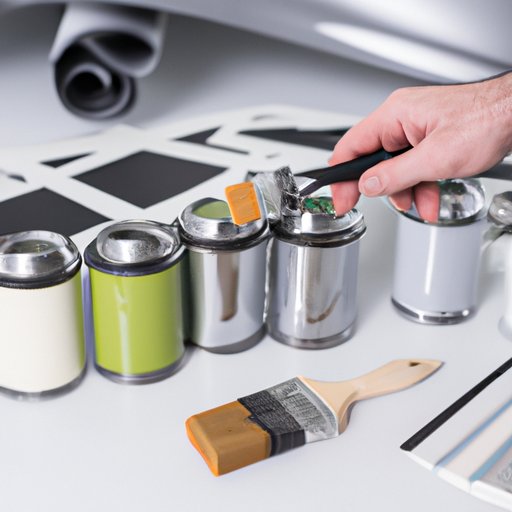Introduction
Painting car parts can be an expensive task, especially if you’re taking your car to the shop for customization. But did you know that you could achieve an almost-professional level of finish by painting your car parts at home? In this article, we will guide you through the steps to paint your car parts successfully.
Prepping the Car Surface
The most crucial aspect of painting your car parts is to prepare the car surface adequately. A poorly-prepped car surface can lead to paint peeling, chipping, and even rusting. We recommend using 600-grit sandpaper to remove any old paint or clear coat. Next, clean the car surface thoroughly with soap and water, followed by an oil and grease remover. You can use an air compressor to blow off any dust that may have settled on the car surface. Finally, use filler putty to fill in any noticeable dents and scratches.
Achieving a Smooth Finish without Professional Tools
If you don’t have access to professional tools, it’s still possible to achieve a smooth finish. Begin by sanding the car surface with a 1200-grit sandpaper. This will create a smooth surface that will help the paint adhere to the car’s surface. Apply a primer evenly on the car surface, wait for it to dry, and sand it with 2000-grit sandpaper. Afterward, apply the desired color paint in light coats, allowing each coat to dry for a few minutes before adding another. To avoid streaks or bubbling, ensure that the car surface is dried completely before applying another coat.
Selecting the Right Paint for a DIY Car Painting Project
When it comes to selecting the paint for your DIY project, there are various types of car paints, including enamel, lacquer, and urethane-based. Enamel paint is easier to apply, dries quickly, and is more affordable. Urethane-based paint, on the other hand, is long-lasting, more durable, but quite expensive. Lacquer is not commonly used because the solvents in the paint can cause severe damage to the car surface. When picking the paint for your project, consider the time you have, the price, and durability.
Dos and Don’ts of Painting Car Parts
One of the most common mistakes when painting car parts is not removing all the dirt and debris from the surface before painting. Failing to follow the manufacturer’s guidelines could lead to inadequate coverage of the car surface and cause problems when applying additional coats. It’s also essential to choose a proper location for the painting project, away from dust or debris that may fall on the wet paint surface. When handling the paint, wear gloves to avoid staining your hands, and remember to shake the paint can thoroughly before applying.
Recommended Tools for DIY Car Painting
Some of the essential tools and materials needed for your DIY car painting project include sandpaper, filler putty, primer, paint, clear coat, a spray gun or aerosol can, a mask, gloves, and an oil and grease remover. These tools and materials are affordable and easy to find at your local auto store or online. You may also need a compressor to power the professional-grade spray gun.
Personalizing a Car’s Design with Paint and Other Materials
Painting your car parts is an excellent way to add an extra level of uniqueness and creativity to your car’s design. You can use stencils or decals to create graphics or custom colors to add highlights to the design. You can also use stripes or tribal designs to enhance your car’s look. Plasti-Dip is another material that car enthusiasts can use to wrap their cars easily and affordably, allowing for effortless personalization.
Conclusion
Painting car parts is one of the most affordable ways to enhance your car’s look, and it’s a fun and creative DIY project to try. By following our guide, you can achieve a professional finish without breaking your bank. Remember to prep the car surface effectively, select the appropriate paint, and always follow the manufacturer’s instructions.
(Note: Is this article not meeting your expectations? Do you have knowledge or insights to share? Unlock new opportunities and expand your reach by joining our authors team. Click Registration to join us and share your expertise with our readers.)
